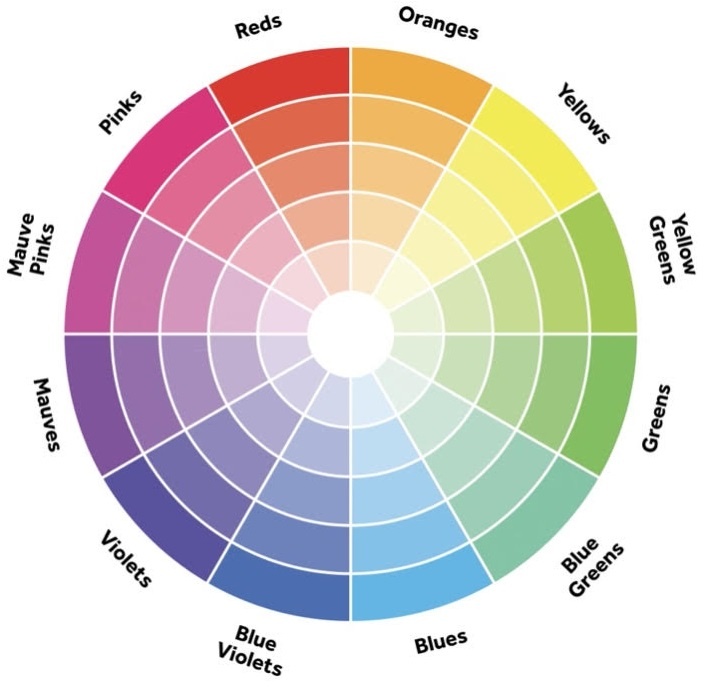The Most Colorful Time of All
This is the time when our impulse plant purchases and random color choices reward or punish us

July is the most unapologetically colorful month in my Zone 7 garden. April and May bring the much-welcomed arrival of color after a winter of muted browns and grays. But, those colors are restrained — lots of pastels, whites, and spring greens – as if nature knows I’m not quite ready to handle much more than that. Then June rolls around and the colors become deeper and more saturated. Tree leaves lose their acid tones and settle into their darker hues. Peonies, roses, and other June bloomers start their yearly show while freshly planted bedding and container plants start hinting at the colors they’re going to bring to the party.
And then July hits and, just as the fireworks celebrating the nation’s birthday on July 4th die down, our gardens erupt into their own showy spectacle. Daylilies, echinacea, hibiscus, annuals of all sorts, morning glories, cannas, gladiolas, you name it, are all blooming their colorful heads off, all acting like soloists when they should be members of the choir. For many people, this exuberant display of color is the main reason they garden. They love the colorful show. Some people do seem to have an innate talent for this. They come up with color combinations many of us would never dream of, creating mixes that are bold and striking; others create mixes that are sophisticated and nuanced. Other gardeners like the sport of it. They love experimenting with color combinations and finding ways to cram as much color into their borders, beds, and containers as possible. Most of us, though, are presented with a mix of random impulse purchases bumping up against more intentionally planned and coordinated color combinations. Sometimes it works; sometimes, not so much.
In order to take control over this possible color chaos and create combinations that are more striking and intentional, a gardener has to put down his or her spade and rake for a while and pick up a calendar. And a color wheel. The calendar part is fairly straightforward. Plot out the weeks of the growing season and then map out the blooming times and the colors of the flowers you have or are thinking of planting (using color markers or pencils can help you see the color combinations as you make your list). The color wheel, on the other hand, takes a bit of fidgeting. But, once you get the hang of it, and have a basic understanding of what is grandly called “color theory,” you can come up with some pretty great color combinations.
What is Color Theory?
In its simplest form, color theory is how the colors on the color wheel relate to one another. You remember learning about the color wheel in school. We learned that colors opposite one another on the color wheel are complementary. Complimentary colors used together create high levels of contrast and convey a sense of exuberance and energy. Too many complementary color pairs in one place, however, can create chaos. Colors next to one on the color wheel are considered “analogous.” When used together, analogous colors create a harmonious look with very little contrast. Think about fall foliage colors, sunsets, or stormy skies. Monochromatic color combinations use various shades and tints of the same color (think
red, pink, and maroon, for example). You can create exciting color combinations by simply superimposing a square or a triangle over your color wheel, uniting three or four different colors that are equal distance apart from one another. It’s a great trick and can result in some pretty striking combinations. So, grab a color wheel and look at your garden. Do your flowers have complimentary-colored partners nearby? If not, pair them up. Do you have two colors of a triangle, but not the third? Complete the party! Are you trying to create a mood that is calm, but your colors are working with one another to produce vibrancy? The color wheel can help you fill in important blanks to help you create effective combinations. Or tell you which plants to yank and give to friends.

Green is a Color!
I must admit, I don’t have much color in my own garden. I don’t know why. Some might say it’s indicative of a fundamentally dull personality. The echo of my parent’s voices in my head says it’s because I’m afraid to make choices and to live with the consequences of those choices. I prefer to think it’s because I prefer subtlety and sophistication. And self-delusion. Whatever the reason, I find myself relying on various shades of green and different textures of leaves to give my garden whatever visual interest it has. That means placing the broad leaves of hostas next to the feathery fronds of ferns or planting a plant with wide glaucous, blue leaves next to the acid green blades of Japanese Forest Grass ‘Aureola’ (Hakonechloa macra ‘Aureola’, USDA Hardiness Zones 4 to 9).
White is a Color too!
When I pick out flowering shrubs and trees, I tend to opt for those with white flowers. The possible reasons for this are most likely the same as those for my habitual reliance on foliage (I’m boring. I’m scared. I have delusions of sophisticated grandeur). But, in many cases, it’s because the plants are down-right amazing. Crepe Myrtle ‘Natchez, (Lagerstroemia indica x fauriei ‘Natchez’, Zones 6 -9), for example. This small tree has the same beautiful vase-shaped form as most crepe myrtles with glossy dark green leaves that turn vibrant orange-red in fall.
The main reason I choose “Natchez’ over other varieties, though (in addition to my preference for its neutral-as-Switzerland white flowers), is its gorgeous smooth, cinnamon-brown exfoliating bark. Believe me. The bark is truly beautiful. When I plant around the four ‘Natchez’ crepe myrtles in my garden, I choose low-growing plants so I don’t obstruct the view of that amazing bark.
The other reason to choose white flowers is how they glow at night. If you have gardens surrounding a porch or patio that you use at night, I suggest that you use plenty of white flowers in those locations. Where deeper, more saturated colors will disappear in the dark, white flowers will glow in the moonlight or candlelight.
Containers Aren’t Forever.
I tend to concentrate the colors I use in the garden in my containers. The smaller scale of containers makes it much easier to manage colors than broad expanses of garden beds. And, because you’re using many fewer plants, you can afford to experiment a bit. If a color combination doesn’t work, or if the cultural requirements of your combined plants are at odds, with some needing lots of water and others adverse to it, you can inexpensively replace them. I recently lost several plants in my containers when my drip irrigation system broke down. Because I was dealing with containers, the damage was limited. The die-off has given me an opportunity to experiment with different plants and different colors to give the pots a mid-season re-fresh.
If you are a more responsible gardener and don’t kill off your plants, but just want to experiment a bit, you can regularly swap out plants in containers seasonally. Here in the mid-Atlantic, lots of gardeners start the season with pansies and violas in containers, then switch to tropical plants and annual flowers for the summer. The cool weather of fall brings asters, chrysanthemums, ornamental cabbages and kales, and a return of the pansies. Winter brings cut and live evergreens, cut and live red twig dogwoods, and winter-blooming hellebores. These seasonal re-plantings are small in scale and easily done. And, because they’re in pots, the work is mostly done standing, so there’s no back-breaking bending involved.

ABOUT THE AUTHOR
Barry Goodinson is an amateur gardener who tends to his Zone 7 garden in southern Delaware on the Atlantic coast of the United States. He has spent his career working with non-governmental organizations focusing on issues such as homelessness, HIV/AIDS, urban green space improvement, and historic preservation. He has an undergraduate degree in philosophy, a master’s degree in public policy, and a certificate in landscape design.
GIVE YOUR FAVORITE PLANTS 5-STARS
Document all you plants in Garenize by adding your own photos and notes, and mark your favorites with 5-stars. This way you can easily go back and check which ones you like the best. Plant by plant, photo by photo you will have a complete personal garden library!
You can download Gardenize from the App Store or Google Play, or log in to the web.
You can find more information on our website Gardenize.com.

More from Gardenize
